[English] 日本語
 Yorodumi
Yorodumi- PDB-8bd3: Cryo-EM structure of the Photosystem II - LHCII supercomplex from... -
+ Open data
Open data
- Basic information
Basic information
| Entry | Database: PDB / ID: 8bd3 | ||||||
|---|---|---|---|---|---|---|---|
| Title | Cryo-EM structure of the Photosystem II - LHCII supercomplex from Chlorella ohadi | ||||||
 Components Components |
| ||||||
 Keywords Keywords | PHOTOSYNTHESIS / Green alga / PSII / C.ohadi / membrane protein / Cryo-EM | ||||||
| Function / homology |  Function and homology information Function and homology informationdiacylglycerol kinase (ATP) / ATP-dependent diacylglycerol kinase activity / chloroplast thylakoid / photosynthesis, light harvesting / photosystem II oxygen evolving complex / photosystem II assembly / oxygen evolving activity / photosystem II stabilization / photosystem II reaction center / photosystem II ...diacylglycerol kinase (ATP) / ATP-dependent diacylglycerol kinase activity / chloroplast thylakoid / photosynthesis, light harvesting / photosystem II oxygen evolving complex / photosystem II assembly / oxygen evolving activity / photosystem II stabilization / photosystem II reaction center / photosystem II / oxidoreductase activity, acting on diphenols and related substances as donors, oxygen as acceptor / photosynthetic electron transport chain / photosystem I / photosystem II / extrinsic component of membrane / response to herbicide / chlorophyll binding / photosynthetic electron transport in photosystem II / phosphate ion binding / photosynthesis, light reaction / chloroplast thylakoid membrane / photosynthesis / cell redox homeostasis / chloroplast / phospholipase C-activating G protein-coupled receptor signaling pathway / electron transfer activity / protein stabilization / iron ion binding / heme binding / calcium ion binding / RNA binding / ATP binding / metal ion binding / membrane Similarity search - Function | ||||||
| Biological species |  Chlorella ohadii (plant) Chlorella ohadii (plant) | ||||||
| Method | ELECTRON MICROSCOPY / single particle reconstruction / cryo EM / Resolution: 2.73 Å | ||||||
 Authors Authors | Fadeeva, M. / Klaiman, D. / Caspy, I. / Nelson, N. | ||||||
| Funding support |  Israel, 1items Israel, 1items
| ||||||
 Citation Citation |  Journal: Cells / Year: 2023 Journal: Cells / Year: 2023Title: Structure of Photosystem II Reveals Protective Mechanisms against Environmental Stress. Authors: Maria Fadeeva / Daniel Klaiman / Ido Caspy / Nathan Nelson /  Abstract: Green alga is known for its ability to carry out photosynthesis under harsh conditions. Using cryogenic electron microscopy (cryoEM), we obtained a high-resolution structure of PSII at 2.72 Å. This ...Green alga is known for its ability to carry out photosynthesis under harsh conditions. Using cryogenic electron microscopy (cryoEM), we obtained a high-resolution structure of PSII at 2.72 Å. This structure revealed 64 subunits, which encompassed 386 chlorophylls, 86 carotenoids, four plastoquinones, and several structural lipids. At the luminal side of PSII, a unique subunit arrangement was observed to protect the oxygen-evolving complex. This arrangement involved PsbO (OEE1), PsbP (OEE2), PsbB, and PsbU (a homolog of plant OEE3). PsbU interacted with PsbO, PsbC, and PsbP, thereby stabilizing the shield of the oxygen-evolving complex. Significant changes were also observed at the stromal electron acceptor side. PsbY, identified as a transmembrane helix, was situated alongside PsbF and PsbE, which enclosed cytochrome . Supported by the adjacent C-terminal helix of Psb10, these four transmembrane helices formed a bundle that shielded cytochrome from the surrounding solvent. Moreover, the bulk of Psb10 formed a protective cap, which safeguarded the quinone site and likely contributed to the stacking of PSII complexes. Based on our findings, we propose a protective mechanism that prevents Q (plastoquinone B) from becoming fully reduced. This mechanism offers insights into the regulation of electron transfer within PSII. | ||||||
| History |
|
- Structure visualization
Structure visualization
| Structure viewer | Molecule:  Molmil Molmil Jmol/JSmol Jmol/JSmol |
|---|
- Downloads & links
Downloads & links
- Download
Download
| PDBx/mmCIF format |  8bd3.cif.gz 8bd3.cif.gz | 2.5 MB | Display |  PDBx/mmCIF format PDBx/mmCIF format |
|---|---|---|---|---|
| PDB format |  pdb8bd3.ent.gz pdb8bd3.ent.gz | Display |  PDB format PDB format | |
| PDBx/mmJSON format |  8bd3.json.gz 8bd3.json.gz | Tree view |  PDBx/mmJSON format PDBx/mmJSON format | |
| Others |  Other downloads Other downloads |
-Validation report
| Arichive directory |  https://data.pdbj.org/pub/pdb/validation_reports/bd/8bd3 https://data.pdbj.org/pub/pdb/validation_reports/bd/8bd3 ftp://data.pdbj.org/pub/pdb/validation_reports/bd/8bd3 ftp://data.pdbj.org/pub/pdb/validation_reports/bd/8bd3 | HTTPS FTP |
|---|
-Related structure data
| Related structure data |  15973MC M: map data used to model this data C: citing same article ( |
|---|---|
| Similar structure data | Similarity search - Function & homology  F&H Search F&H Search |
- Links
Links
- Assembly
Assembly
| Deposited unit | 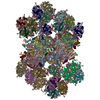
|
|---|---|
| 1 |
|
- Components
Components
+Chlorophyll a-b binding protein, ... , 2 types, 8 molecules 1724G9qg
+Chlorophyll a-b binding of ... , 2 types, 8 molecules 35N8pn60
+Photosystem II ... , 16 types, 32 molecules AaBbCcDdHhIiJjKkLlMmTtVvWwXxZzF1f1
+Cytochrome b559 subunit ... , 2 types, 4 molecules EeFf
+Chloroplast oxygen-evolving enhancer protein ... , 2 types, 4 molecules OoUu
+Chlorophyll a ... , 2 types, 4 molecules RrSs
+Protein , 2 types, 4 molecules YyP1p1
+Protein/peptide , 1 types, 2 molecules Q1q1
+Sugars , 2 types, 12 molecules 
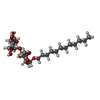

+Non-polymers , 18 types, 884 molecules 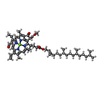

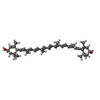



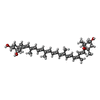
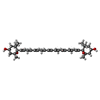

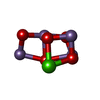




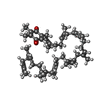
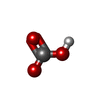



















 Movie
Movie Controller
Controller


 PDBj
PDBj

























